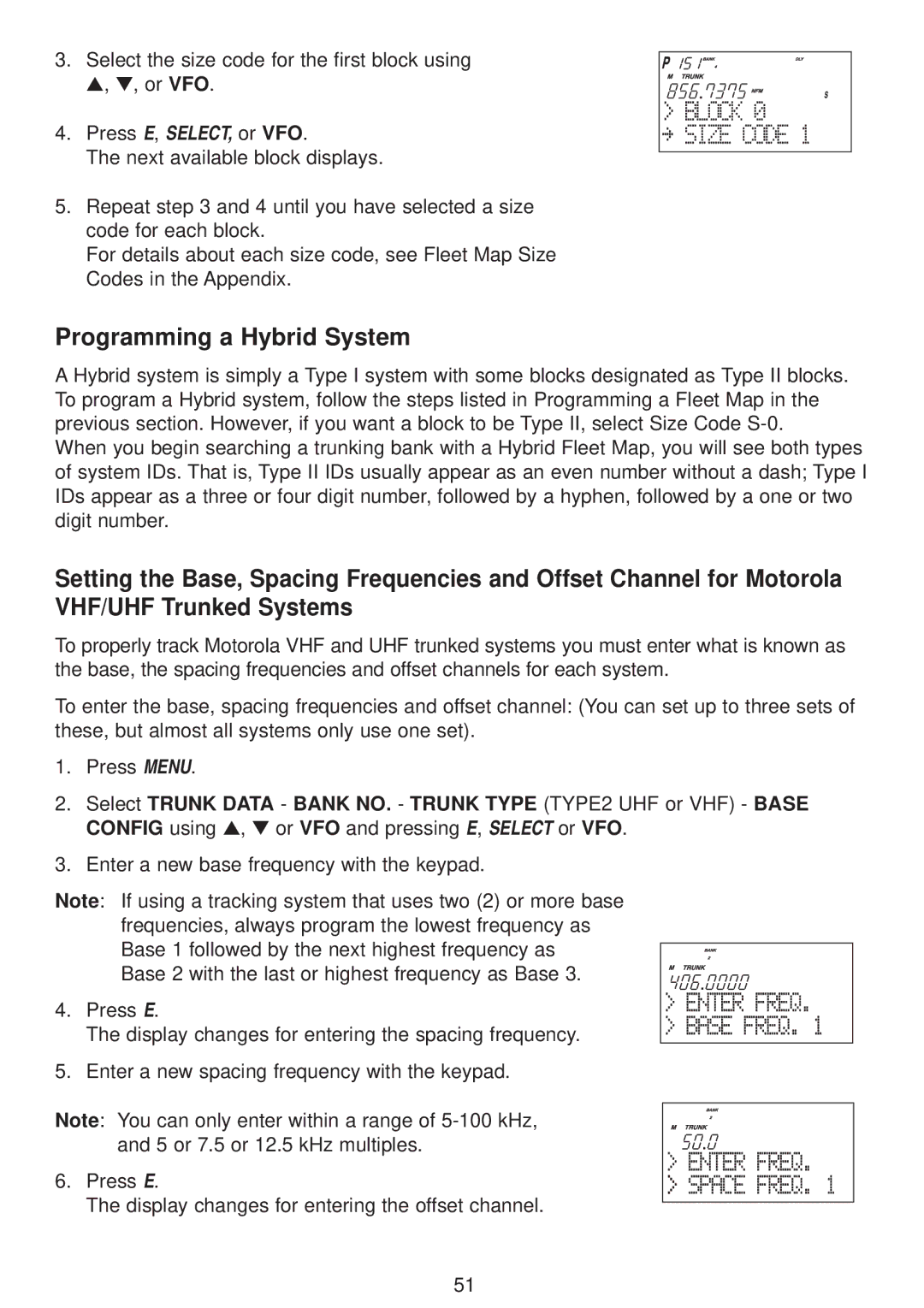
3. Select the size code for the first block using ▲, ▼, or VFO.
4. Press E, SELECT, or VFO.
The next available block displays.
5.Repeat step 3 and 4 until you have selected a size code for each block.
For details about each size code, see Fleet Map Size Codes in the Appendix.
Programming a Hybrid System
A Hybrid system is simply a Type I system with some blocks designated as Type II blocks. To program a Hybrid system, follow the steps listed in Programming a Fleet Map in the previous section. However, if you want a block to be Type II, select Size Code
When you begin searching a trunking bank with a Hybrid Fleet Map, you will see both types of system IDs. That is, Type II IDs usually appear as an even number without a dash; Type I IDs appear as a three or four digit number, followed by a hyphen, followed by a one or two digit number.
Setting the Base, Spacing Frequencies and Offset Channel for Motorola VHF/UHF Trunked Systems
To properly track Motorola VHF and UHF trunked systems you must enter what is known as the base, the spacing frequencies and offset channels for each system.
To enter the base, spacing frequencies and offset channel: (You can set up to three sets of these, but almost all systems only use one set).
1.Press MENU.
2.Select TRUNK DATA - BANK NO. - TRUNK TYPE (TYPE2 UHF or VHF) - BASE CONFIG using ▲, ▼ or VFO and pressing E, SELECT or VFO.
3.Enter a new base frequency with the keypad.
Note: If using a tracking system that uses two (2) or more base frequencies, always program the lowest frequency as Base 1 followed by the next highest frequency as
Base 2 with the last or highest frequency as Base 3.
4.Press E.
The display changes for entering the spacing frequency.
5.Enter a new spacing frequency with the keypad.
Note: You can only enter within a range of
6.Press E.
The display changes for entering the offset channel.
51
